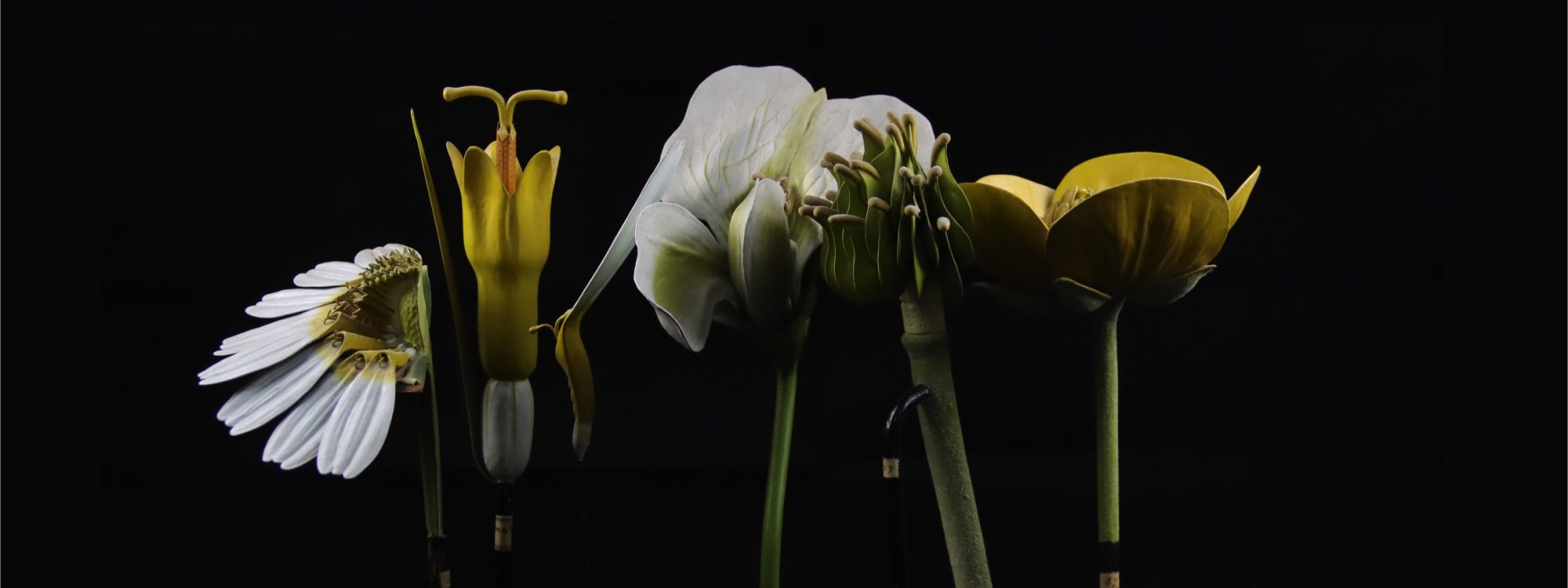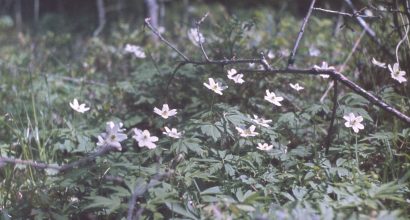Finnish war botanists in Eastern Karelia
During the Second World War herbarium received numerous plant specimens from Eastern Karelia, from where the botanists who were at war delivered samples to the herbarium. A need to justify the war of conquest arose after the Finnish troops crossed the old border with Soviet Union. Therefore, the State Scientific Committee for Eastern Karelia was established to scientifically demonstrate that eastern Karelia and the Kola peninsula belonged to a naturally and culturally unified Greater Finland. Botany played a key role in this, and the committee also coordinated the expeditions of war botanists from Turku.
One of these war botanists was docent Lauri E. Kari (1901-1962), who received a three-month grant to study fungi and lichens in the conquered areas during the summer 1943. Kari was also a pioneer of Finnish colour photography, and had already started taking colour slides at the end of the 1930s. In the archives of the herbarium, we have an collection of colour photos taken by Kari from Eastern Karelia in the summer of 1943, of which a few samples are shown here. Harry Waris (1893-1973), professor of botany at the University of Turku, conducted studies in peat bogs of Eastern Karelia in both 1942 and 1943. Waris also took photographs during his research trips. We are currently looking for funding for the high-quality digitization and publication of these photo archives.
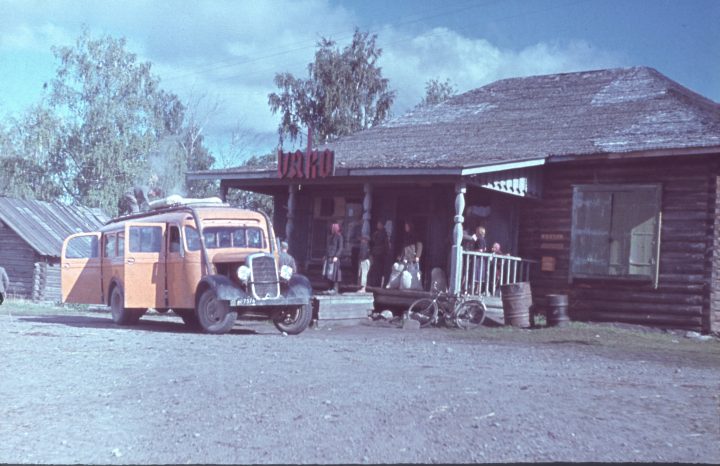
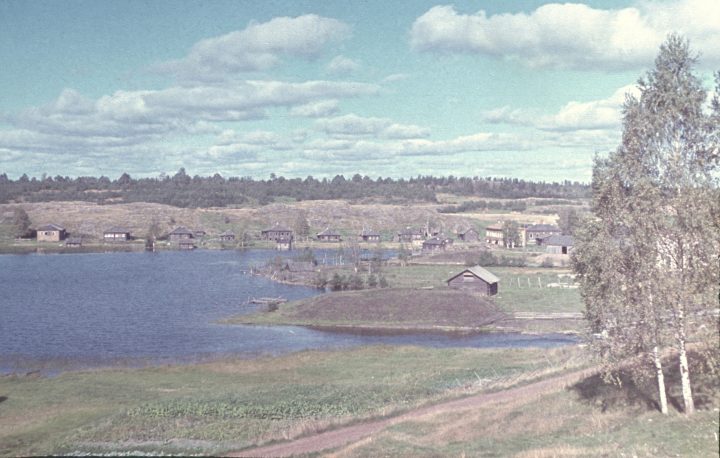
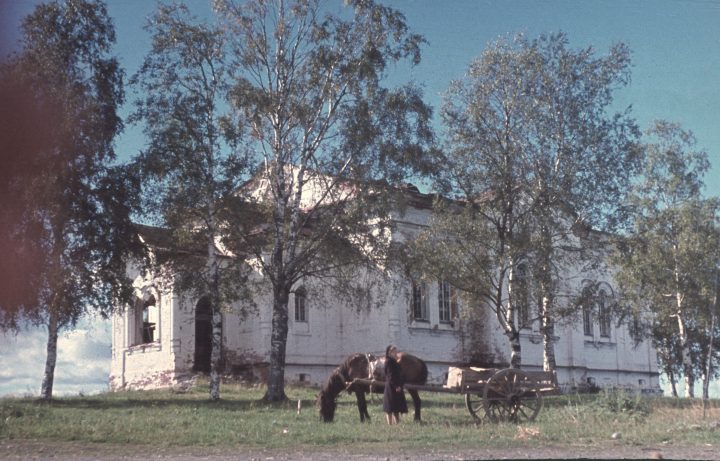
Kentjärvi, September 1943. Photos: Lauri E. Kari.
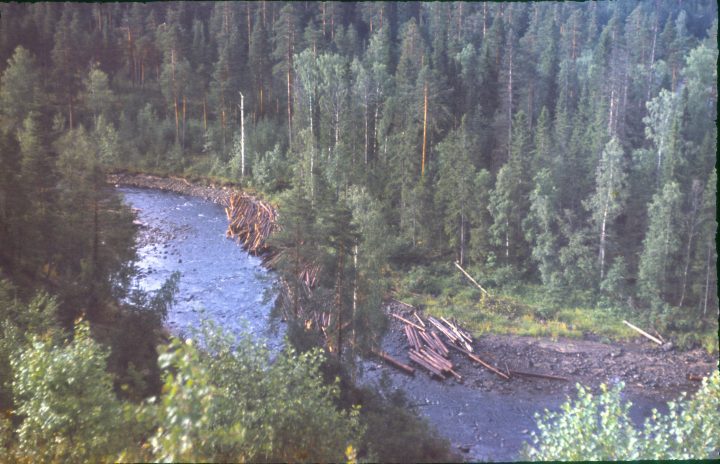
Kumsajoki valley near Medvezhyegorsk, 1943. Photo: Lauri E. Kari.
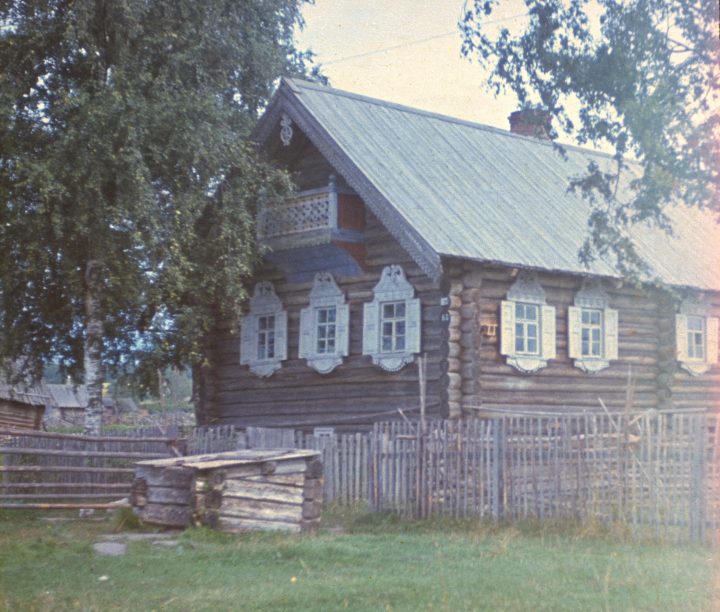

Ruopoja, 1943. Photos: Lauri E. Kari.

Toinenjoki, 1943. Photo: Lauri E. Kari.
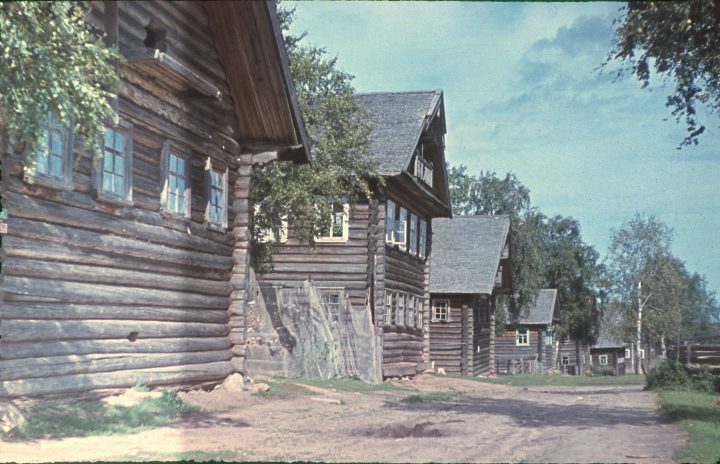
Soutjärvi, 1943. Photo: Lauri E. Kari.
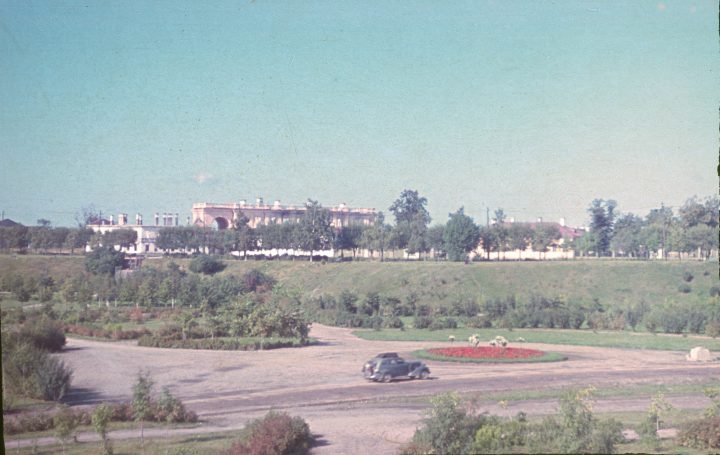
Petrozavodsk, August 1943. Photo: Harry Waris.
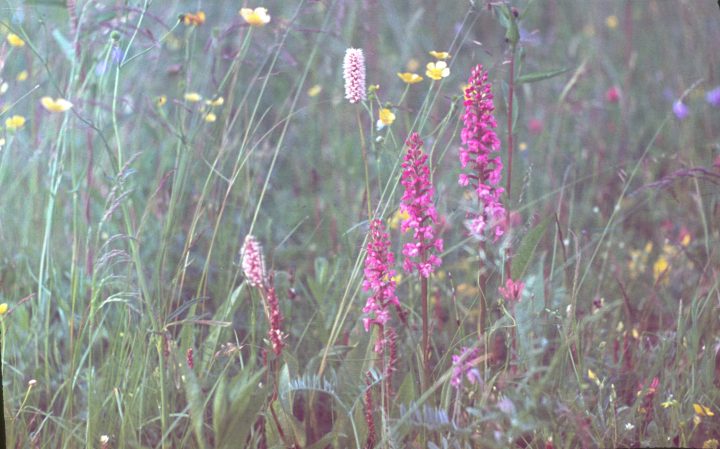
The flower rich vegetation of the meadows of Eastern Karelia; Bistorta officinalis and Gymnadenia conopsea. Jalguba, July 1943. Photo: Lauri E. Kari.
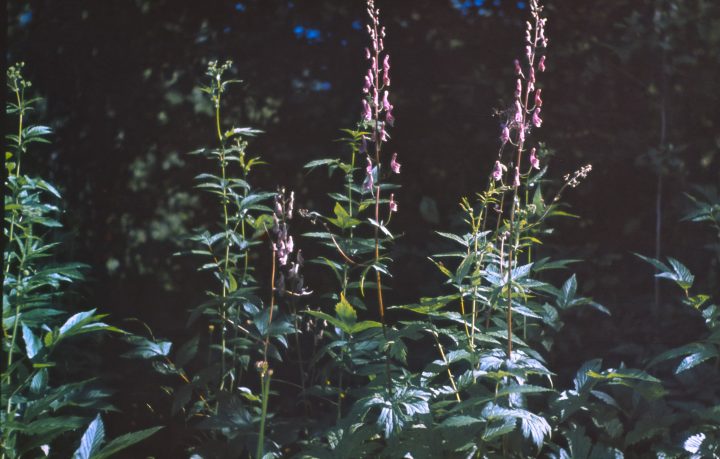
Aconitum lycoctonum subsp. septentrionale was among the plants admired by war botanists. Jalguba, July 1943. Photo: Lauri E. Kari.

Captain Kaarlo “Jukka” Lounamaa, a war botanist from Turku, mapping the vegetation of a meadow where Bistorta officinalis grows. Petrozavodsk region, 5 July 1942. Photo: Harry Waris.
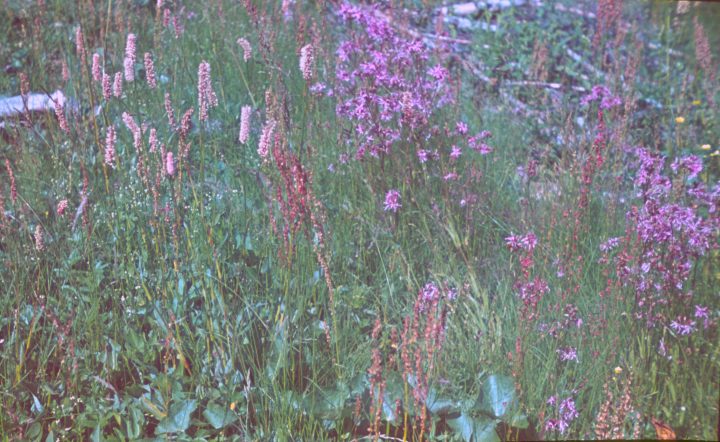
The meadow of Joensuu village. Bistorta officinalis, Lychnis flos-cuculi and Rumex acetosa. Vieljärvi, 2 July 1943. Photo: Harry Waris.
After the massive offensive of Soviet Union, the dream of a Greater Finland collapsed and war botany came into a bad light politically. Now, only Ligularia sibirica and other wonderful plants of the East, collected during the battles and now resting in the shelves, remind us of the fateful connection between botany and Finnish national politics in the midst of the Second World War.
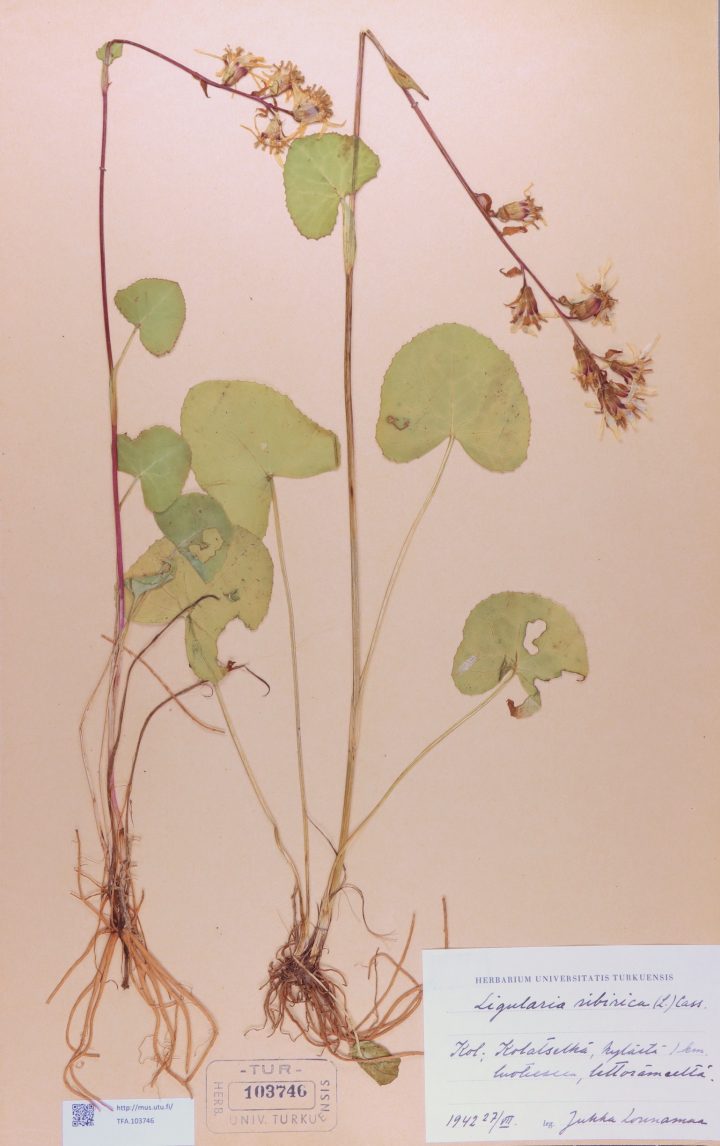
Ligularia sibirica collected by Kaarlo ”Jukka” Lounamaa from Kolatselä, Eastern Karelia, in the summer of 1942. The species is nowadays a fairly common ornamental plant in Finnish gardens, but its natural distribution only starts a few kilometers beyond the old eastern border of Finland, continuing all the way to Siberia.
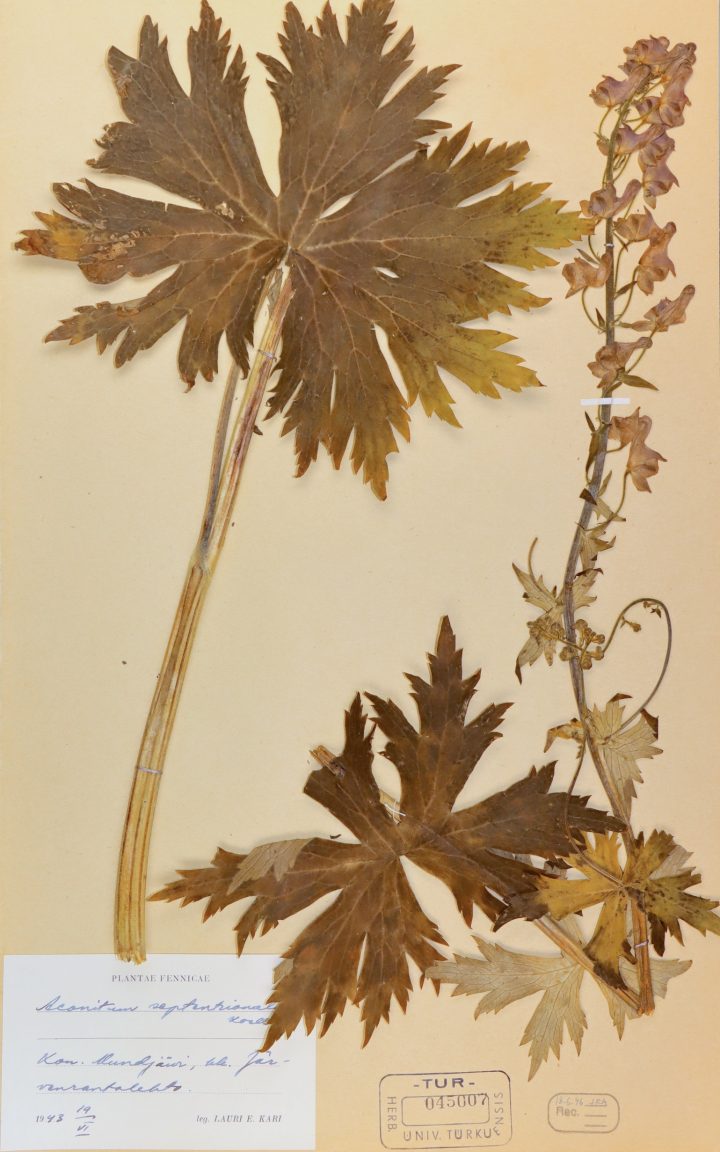
Aconitum lycoctonum subsp. septentrionale collected by Lauri E. Kari from Mundjärvi in Eastern Karelia. Like Ligularia sibirica, it also prefers fertile soils, but its natural distribution extends to the easternmost part of Finland. War botanists, however, noticed that the species was far more common on the other side of the border.

